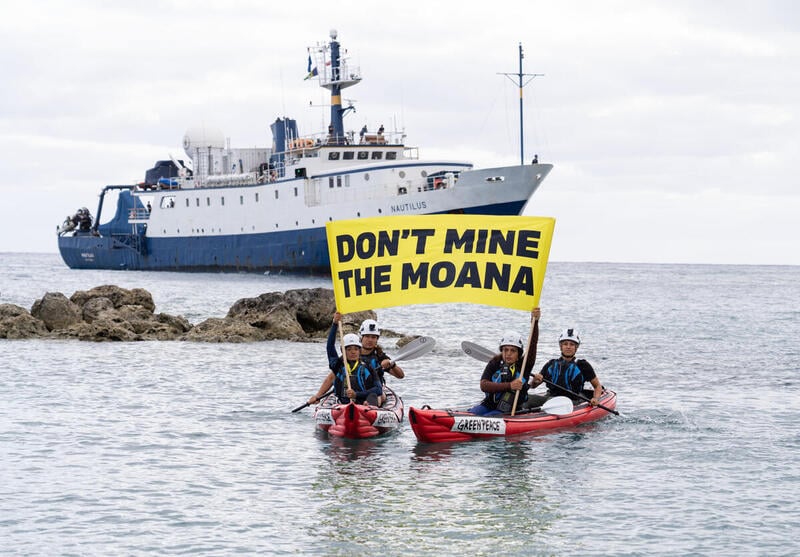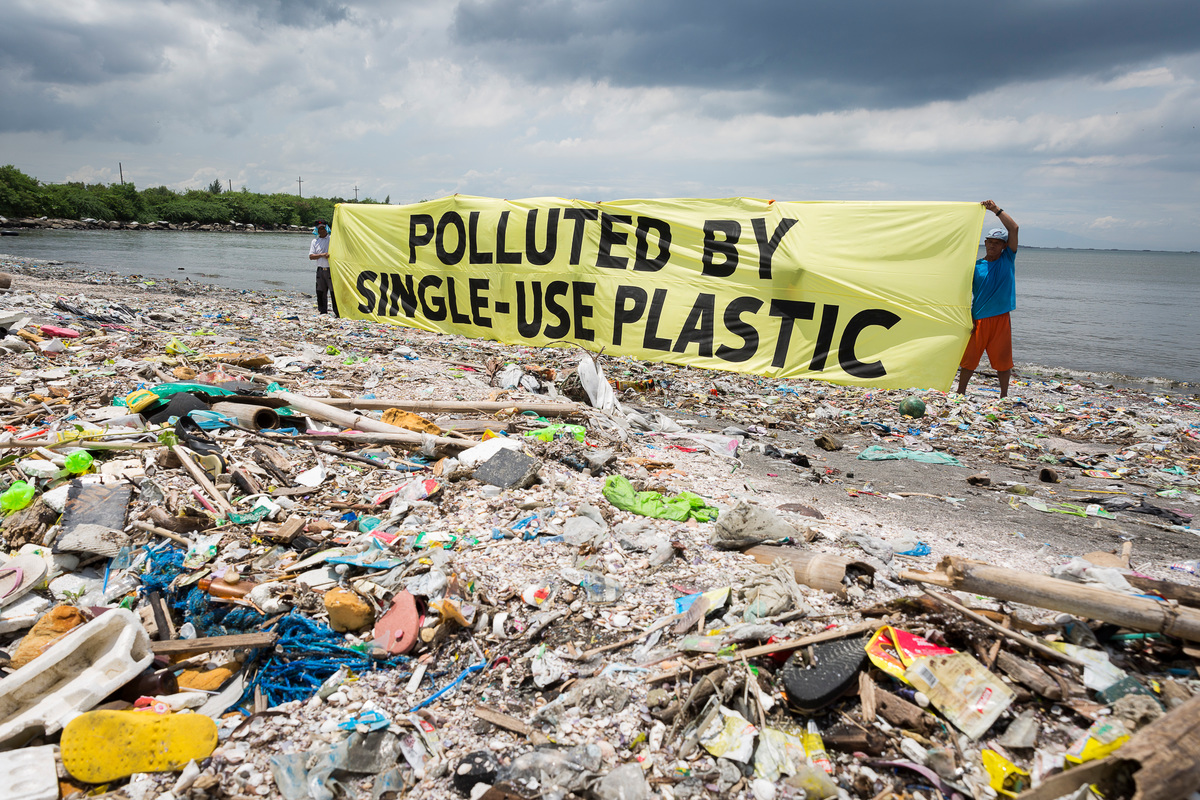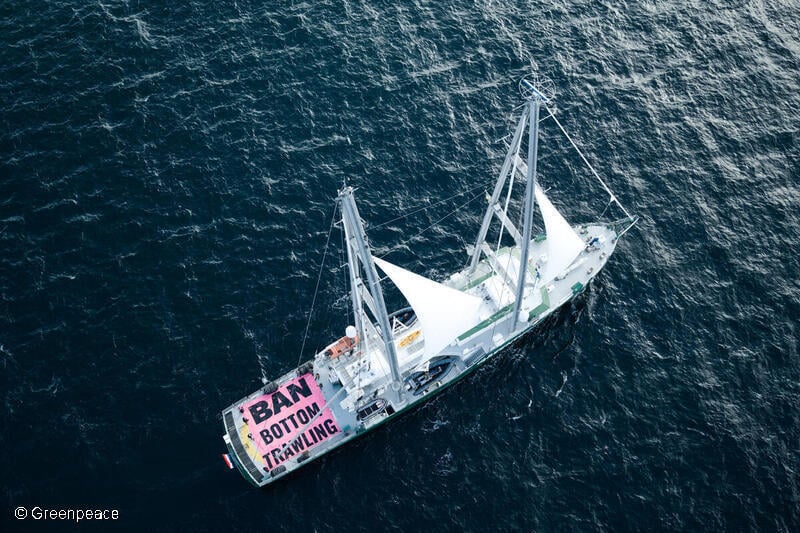On June 12, 2005, Greenpeace Aotearoa captured unmistakable evidence that the bottom trawling industry was destroying deep sea coral in the Tasman sea.
The image went viral, and was pivotal to changing the conversation on ocean protection. It helped to build a campaign to end bottom trawling internationally.
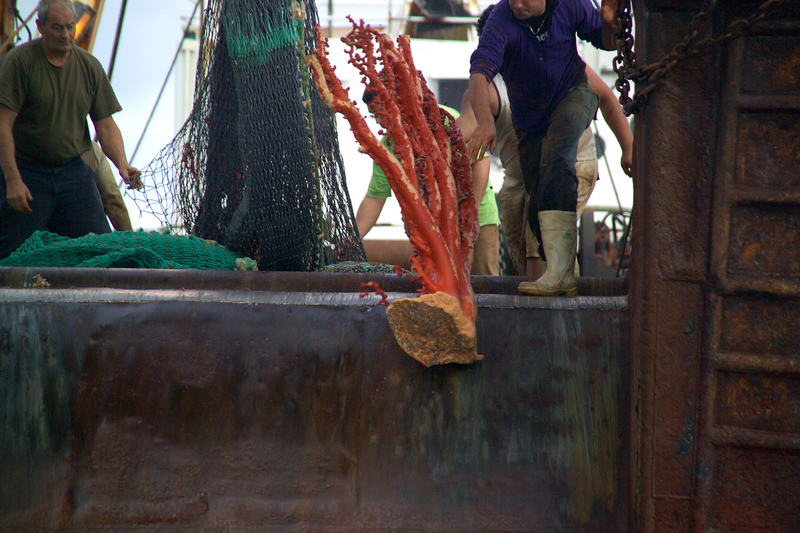
Now, twenty years later, we’re still protesting this shit. So earlier this year, we set out on an expedition to bear witness to the destruction caused by this horrific industry – again.
But why was that photo so important? And what can we learn from that 2005 Rainbow Warrior voyage?
Stay with me, because I’m going to take you through it step by step – starting with the advent of commercial bottom trawling in New Zealand.
Commercial deep-water bottom trawling was adopted en masse by the New Zealand fishing industry in the 1970s. Basically, the fishing industry adopted this practice in order to go after orange roughy in the Chatham Rise. At the time, bottom trawling vessels were hauling up full nets that were just entirely orange. It was an incredibly effective method of catching fish – but it didn’t last. The fishing industry trashed the Chatham Rise to get as much orange roughy as possible. Once they’d finished trashing it, they moved on to other areas.
New Zealand bottom trawling – an international disgrace.
Greenpeace became concerned at an international level because bottom trawling is the most damaging fishing method used by the commercial fishing industry. Greenpeace Aotearoa decided to lead the campaign to ban this practice.
We knew that New Zealand was a key proponent of bottom trawling, destroying coral and other marine life. We also knew that New Zealand bottom trawlers were out in the Tasman, but didn’t know exactly where they were going. And there wasn’t any photographic evidence of what was coming up in their trawl nets. It was all very ‘out of sight, out of mind’.
Finding the bad guys
In 2005, the Rainbow Warrior was coming to New Zealand for only a few weeks. Ultimately, we would have to make an educated guess as to where to go while at sea. It turned out, we chose correctly. After only a few days at sea, the Rainbow Warrior encountered the first bottom trawling vessel it saw on that trip.
While the Rainbow Warrior was at sea chasing bottom trawlers, a delegation of Greenpeace campaigners was in New York attending the UN General Assembly – where discussions on bottom trawling were the main focus. This meeting was coincidentally set for the middle of orange roughy season. It was the perfect time to draw attention to the devastation caused by bottom trawling to all marine life, including coral.
But Greenpeace weren’t the only ones at the UN.
Bottom trawling industry misinformation
The fishing industry had also sent a lot of lobbyists to the UN. These lobbyists were claiming that they did not damage the ocean in the process of their activities. So Greenpeace was on a mission to prove that the bottom trawlers were out in the Tasman causing devastation.
Within a few days, Greenpeace found the trawlers.
Greenpeace action coordinator Chris Hay recalls that “they’d drop their nets down and we’d time it so we knew how long they were dragging their nets down for. They’d be dragging their nets around for 6-8 hours so they could catch enough fish.”
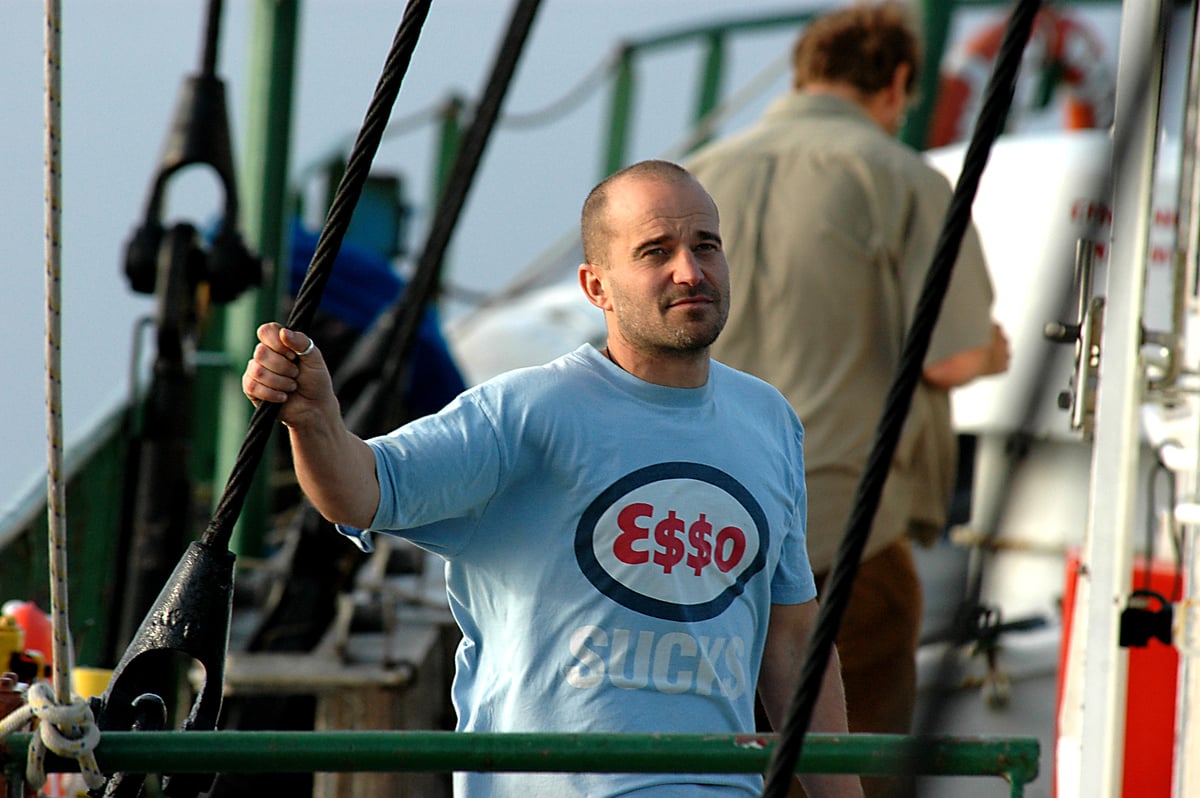
Greenpeace documented the trawlers in the Tasman Sea, and sent the images back to land. But the trawling industry was ready to respond.
The line from them was that their nets didn’t touch the seafloor, let alone catch coral. However, pretty much the next day, we got the ‘smoking gun’ image of coral destruction from bottom trawling.
The moment of truth – New Zealand was bottom trawling coral in the Tasman Sea
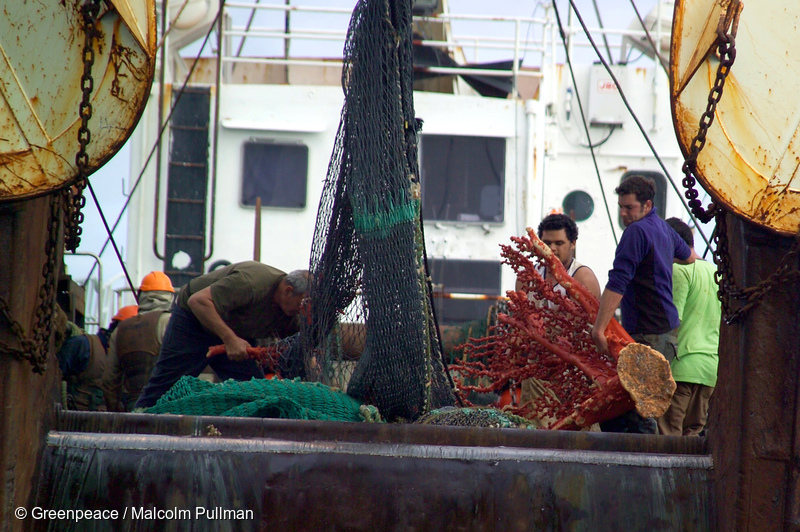
Chris Hay recalled the moment when the trawl net came up and the team spotted the paragorgia coral.
“Our videographer Wooly’s job was to stand in the front of the inflatable boat and film everything that came up in the trawl net. We’d been doing this for a few days so everyone was getting a bit bored […] but the day we got this shot, we were in the inflatable and the net broke the surface, and we could immediately see this massive coral. That’s when Wooly started screaming ‘get me in there, get me in there’.”
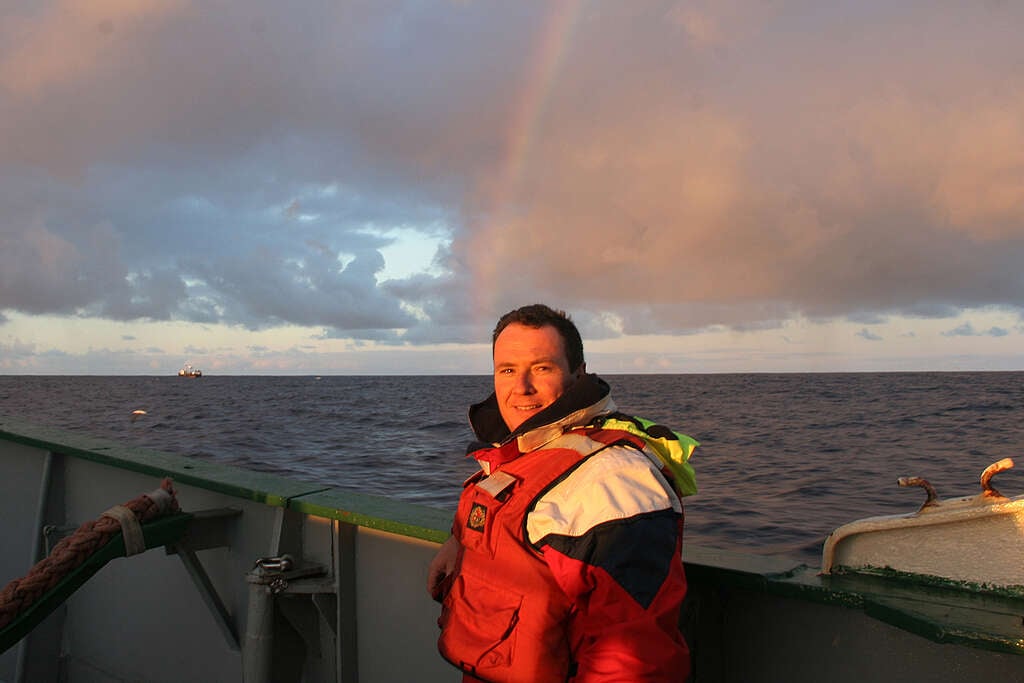
As Hay puts it, it felt like the fishermen were taunting them. They held up the giant piece of coral to show the Greenpeace crew. And that was the moment when we got the iconic photo.
The photo that sent shockwaves around the world
The coral was estimated to be between five hundred and six hundred years old – and the photo had an immediate impact. It travelled all around the world, and is still used today to illustrate the true impact of trawling. 20 years later, news sites still run the photo, and it’s become one of the most defining images of the campaign to end bottom trawling.
Hay recalls that it wasn’t easy to get the photo – the crew onboard the Warrior didn’t go out expecting to get it.
“You’ve just got to be there and film everything, and every now and then you get lucky. It took weeks of being at sea and lots of buckets of vomit, and then we finally cracked it.” – Chris Hay, Greenpeace actions coordinator.
While the image of the coral became the iconic photo from that voyage, there were thousands of other species and critters that were, as Hay puts it, ‘amazing and bizarre and useless to the fishing industry’.
Twenty years on from the coral bottom trawling image – where are we now?
We may have got the photo and with it destroyed the bottom trawling industry’s argument that they weren’t harming the seafloor, but we still haven’t won the fight to end bottom trawling in New Zealand waters or around the world.
That doesn’t mean we’re giving up though. Every day, we’re seeing more and more momentum to stop the destruction of the oceans – whether it’s more countries ratifying the Global Oceans Treaty (the tally reached 50 this week during the 2025 United Nations Oceans Conference), or Greenpeace France dropping boulders onto the seafloor to prevent further bottom trawling.
The world is moving towards more comprehensive ocean protection – something we know is desperately needed if we’re to have a habitable planet for the future.
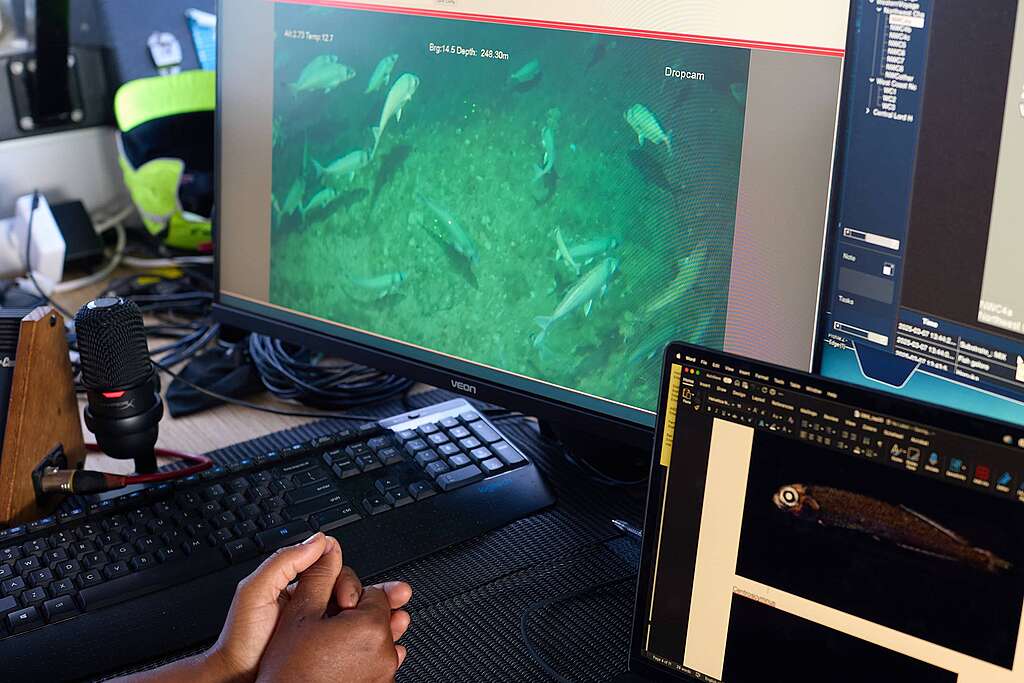
Here in Aotearoa, we have continued our work to bear witness to the destruction this industry causes to the deep. In March, we carried out a Seamounts Expedition. We surveyed multiple sites out in the Tasman High Seas and in the waters of Aotearoa, many of which had never been documented before. In doing this, we continue the Greenpeace legacy of bearing witness, and shining a light in the dark.
Twenty years on, we’re still protesting this shit – and we need you with us. Sign the petition to ban bottom trawling on seamounts and other vulnerable habitats today.
“We need to respect the oceans and take care of them as if our lives depended on it. Because they do.” – Dr. Sylvia Earle

At home and far out to sea, our oceans are being plundered for profit by the fishing industry through bottom trawling. But what is bottom trawling and why is it so destructive to ocean habitats?
Take Action
